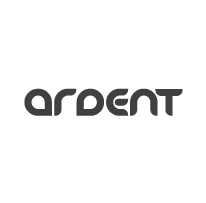The 5 layers of software – what you need to know
29 December 2022 | Noor Khan
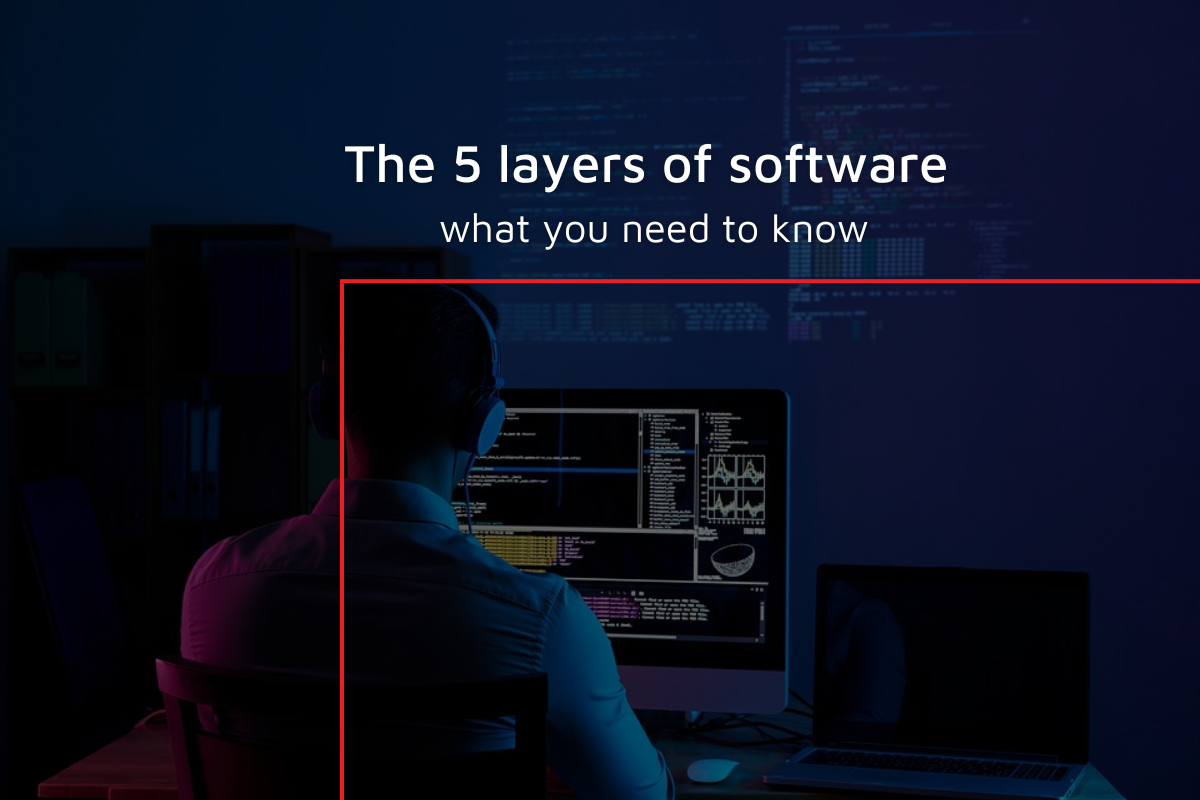
For your software to operate efficiently, effectively, and remain usable through scalability changes and upgrades, it is important to understand how the 5 layers of software are built, and what the different aspects are doing – both separately and individually.
When deciding on software for your business, you may choose to have an in-house team design and create your desired program, or you could outsource the process. Understanding what you need, what you should be looking for, and how these programs are structured will help you to determine how you should approach your software development needs, and identify what is essential, nice to have, or non-essential, allowing you to make more effective use of your time and budget.
What are the 5 layers of software?
One of the most popular architectural patterns for software is layered architecture for multi-layer software. The infrastructure is generally divided into five layers:
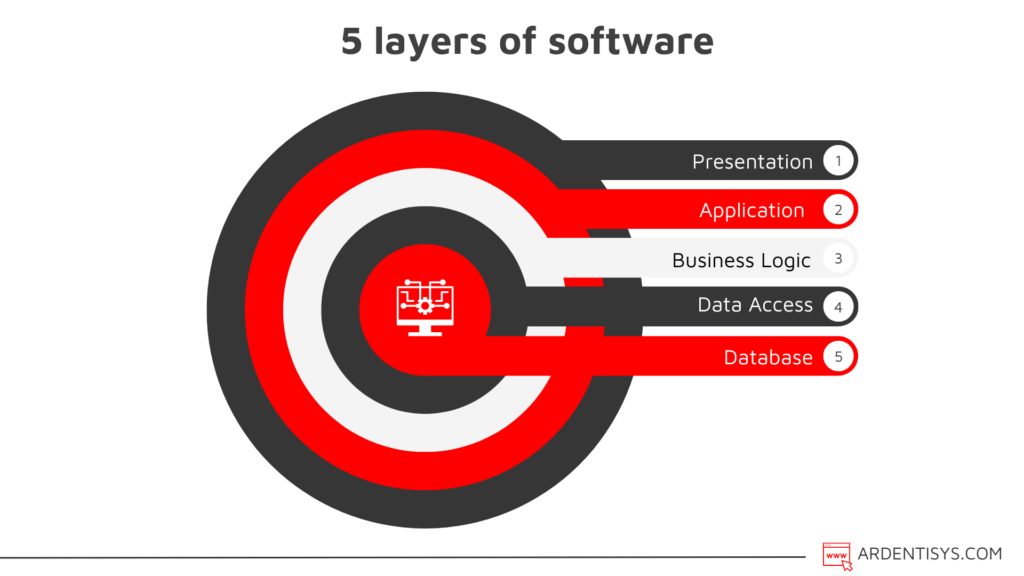
Presentation - User Interface (UI) layer
This is the top layer of the application and, as the name suggests, provides the presentation of the content to the end user. This layer is accessed through client devices – such as mobile phones, tablets, desktops, laptops, etc. This tier can only function when it is interacting correctly with the layers below it.
Application - Service layer
This is a mid-level tier that the application logic runs, it covers the defined rules which have been programmed into the program in order to run the application. This layer is run on one or more application servers and is the layer where programmers spend a considerable amount of their time when working on software development.
Business Logic - Domain layer
This mid-level layer collects together the rules of the system and determines the behaviour of the entire application. It ensures that when one action completes, the application knows what to do next.
Data Access - Persistence layer
This lower-tier layer has a protective function and contains code which is required to access the database layer below it. This tier also generally includes coding which allows for various manipulations on different aspects of the database – such as SQL statements, and details of the connection.
Database
The lowest level of the software architecture, this level is largely concerned with the application data, both storing it and retrieving it for use. The data for the software is often stored on a database server or file server but can also be stored on any device or media which supports data access logic.
Five-tier structure Vs three-tier structure
Not all software uses a 5-tier architectural structure, some will use the minimum value of 3 (presentation, application, and data access). How the software is set up and operated will vary depending on what it is intended to be used for, the type of coding language involved in the creation, and what code has been created to manage the tasks.
Three-tier software can be complex for developers to make application changes, especially when agility and flexibility is required to keep pace with the expectations of end users. A five-tier structure allows for increased scalability, flexibility, ease of management, and the addition of increased security.
The more agile and innovative your software, the more complex your needs will be – and the more appropriate it is for you to seek expert advice on your product development from highly experienced engineers, who can help you create a product that is scalable and suitable for your business now and in the future.
Ardent software development services
At Ardent, we take on your challenges and requirements and deliver a solution that will help you overcome your challenges today and in the future. Our team of highly experienced software developers can help bring your vision to life, employing world-leading technologies in the world including the likes of Ruby on Rails, Angular, MongoDB, .NetCore, Python and much more.
Explore stories on the success of our clients with thier software:
Get in touch to find out more or to get started on making your software a reality.
Ardent Insights
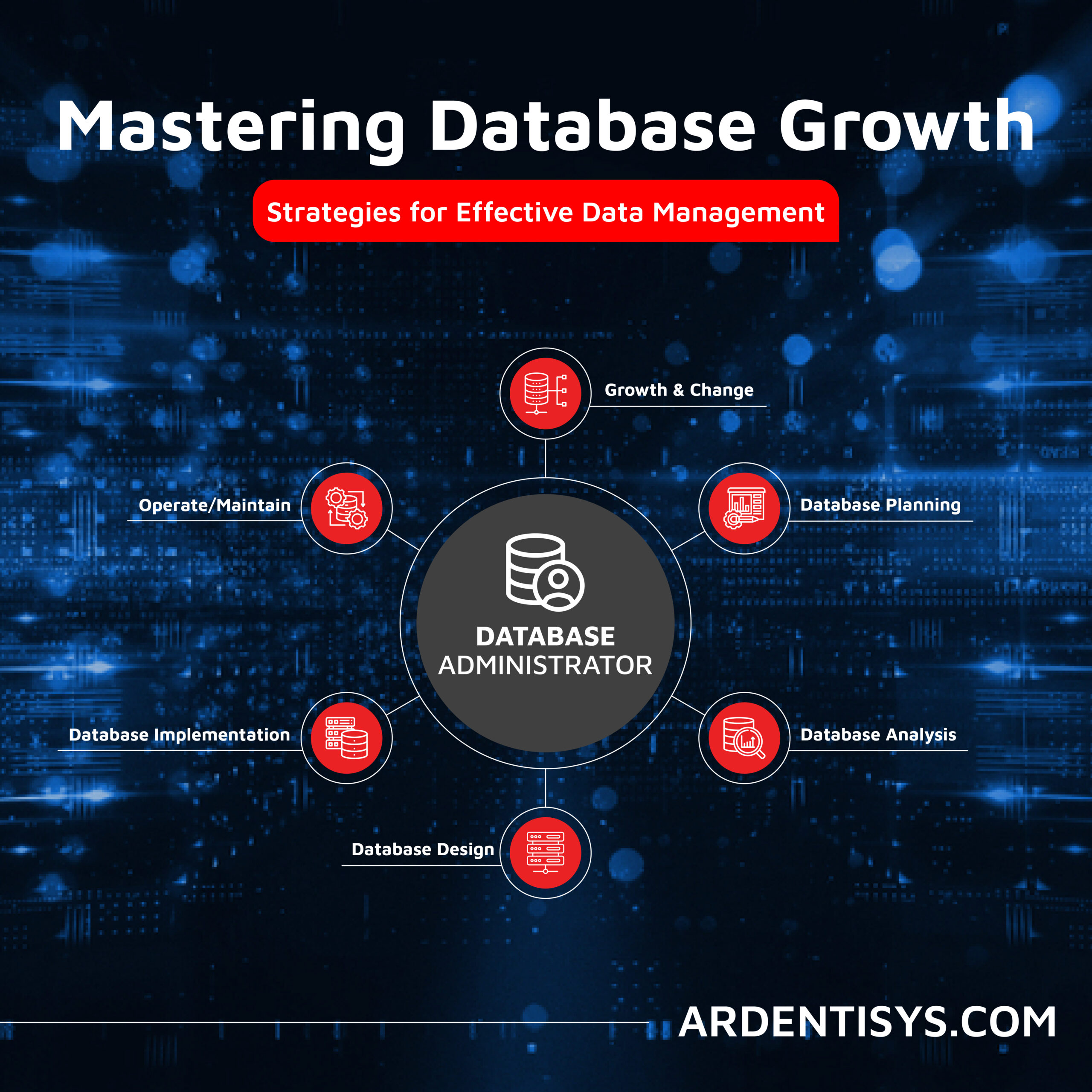
Overcoming Data Administration Challenges and Strategies for Effective Data Management
Businesses face significant challenges to continuously manage and optimise their databases, extract valuable information from them, and then to share and report the insights gained from ongoing analysis of the data. As data continues to grow exponentially, they must address key issues to unlock the full potential of their data asset across the whole business. [...]
Read More... from The 5 layers of software – what you need to know
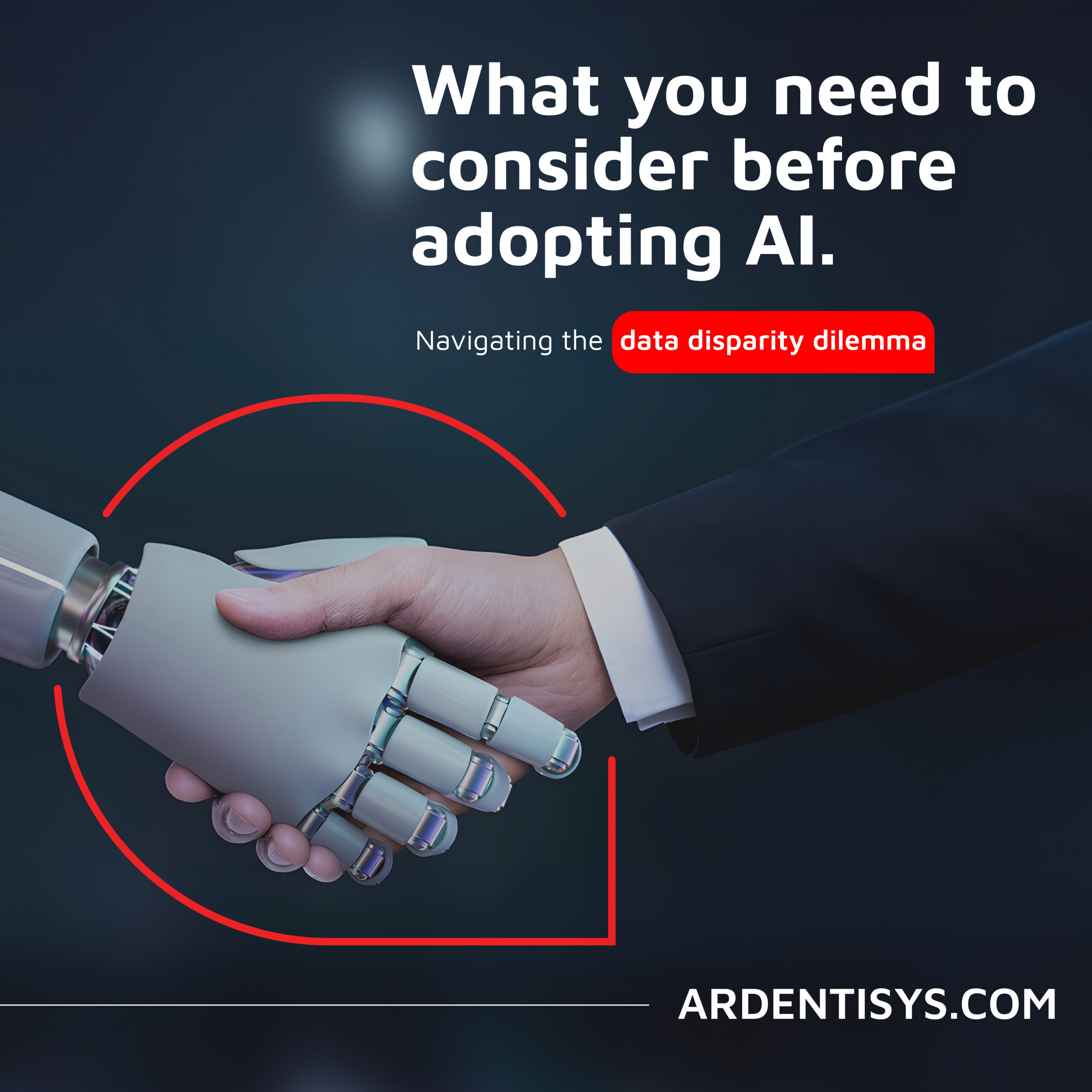
Are you considering AI adoption? We summarise our learnings, do’s and don’ts from our engagements with leading clients.
How Ardent can help you prepare your data for AI success Data is at the core of any business striving to adopt AI. It has become the lifeblood of enterprises, powering insights and innovations that drive better decision making and competitive advantages. As the amount of data generated proliferates across many sectors, the allure of [...]
Read More... from The 5 layers of software – what you need to know
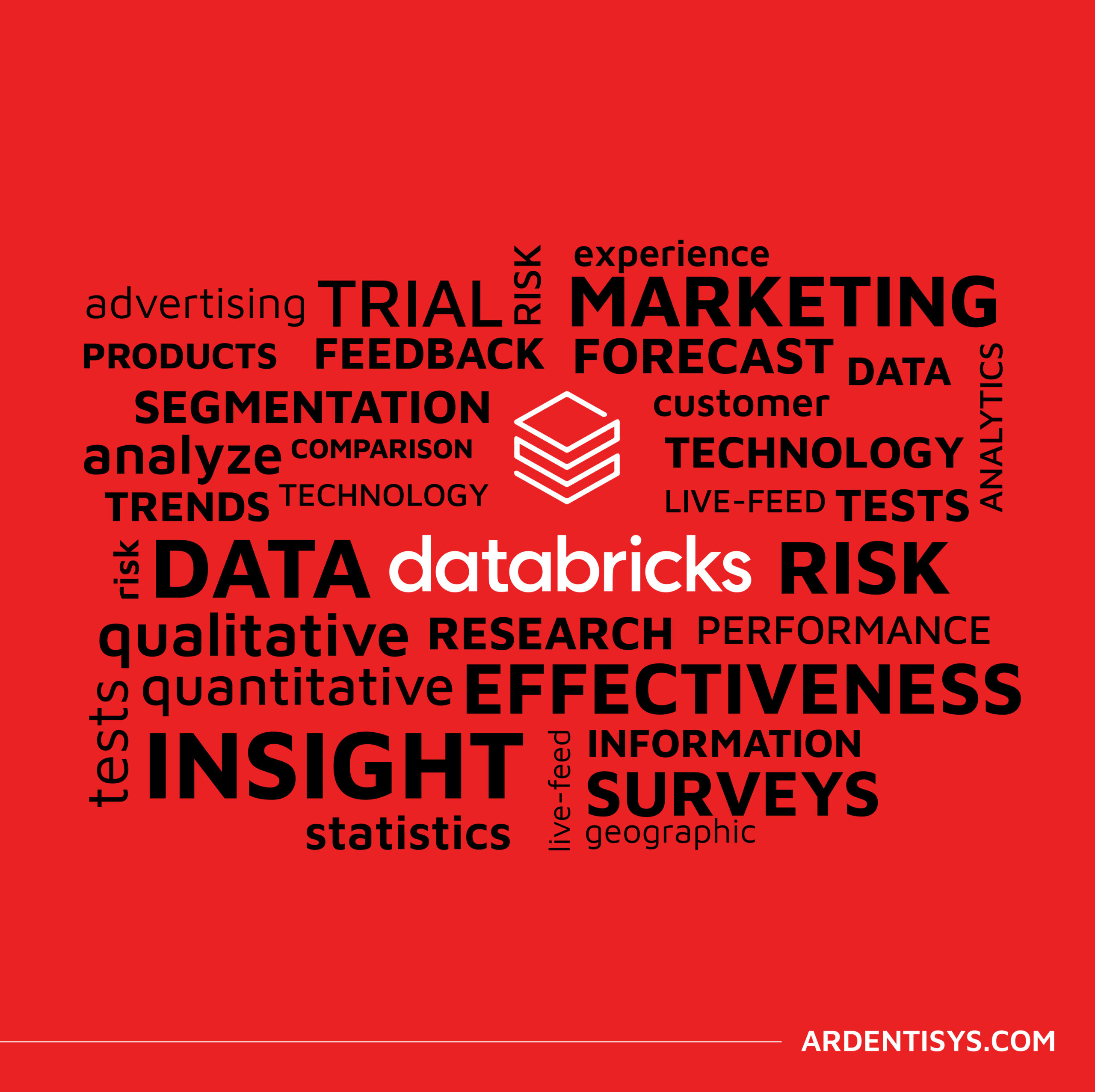
Why the Market Research sector is taking note of Databricks Data Lakehouse.
Overcoming Market Research Challenges For Market Research agencies, Organisations and Brands exploring insights across markets and customers, the traditional research model of bidding for a blend of large-scale qualitative and quantitative data collection processes is losing appeal to a more value-driven, granular, real-time targeted approach to understanding consumer behaviour, more regular insights engagement and more [...]
Read More... from The 5 layers of software – what you need to know




